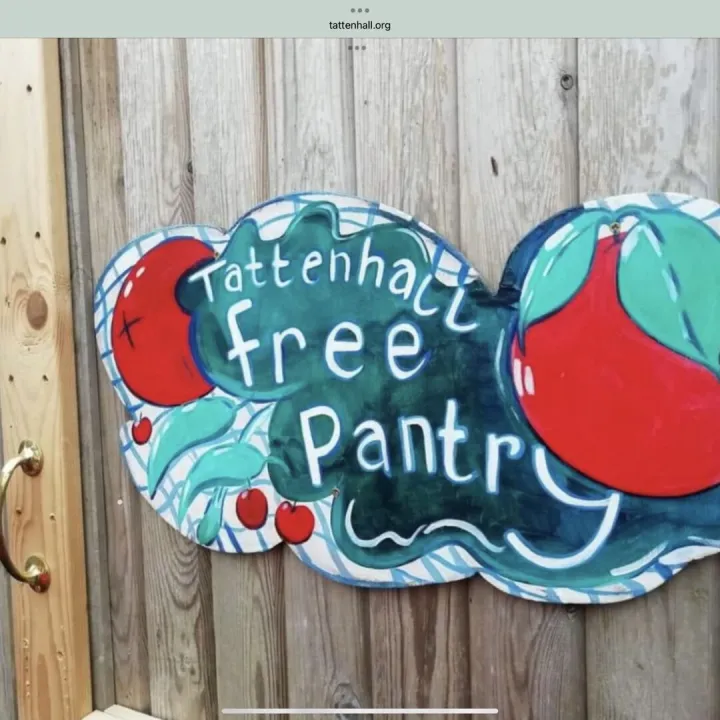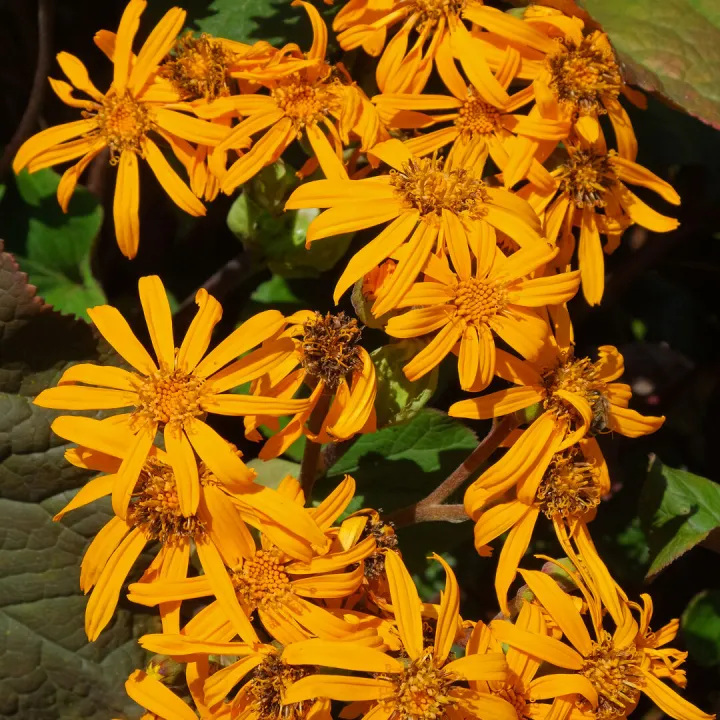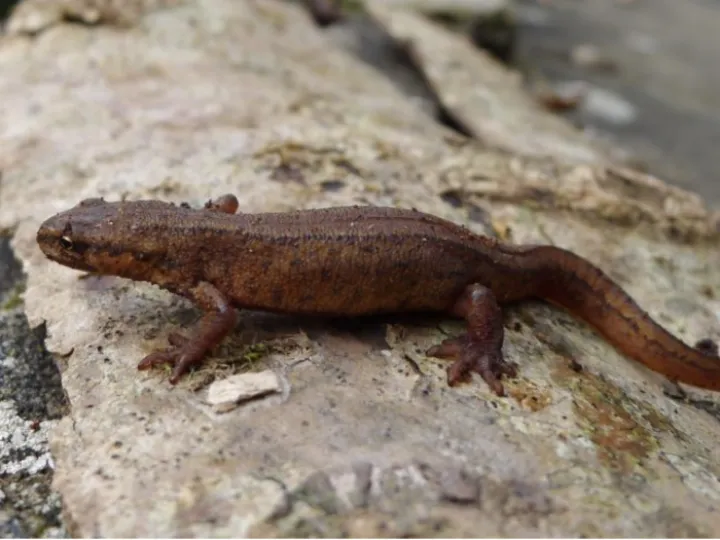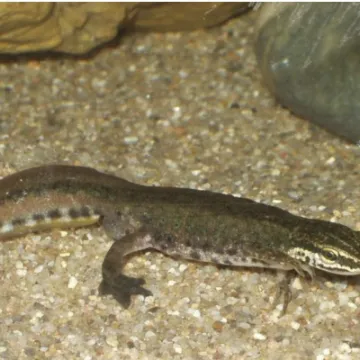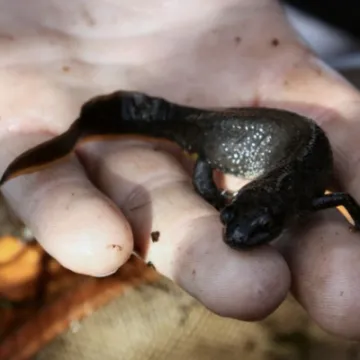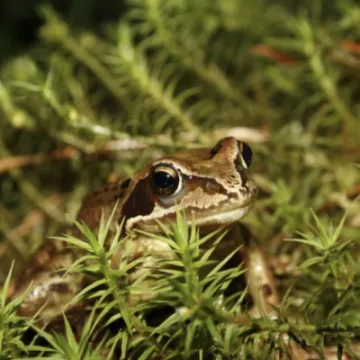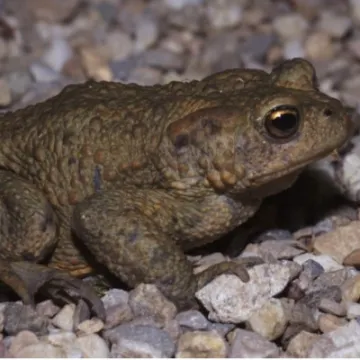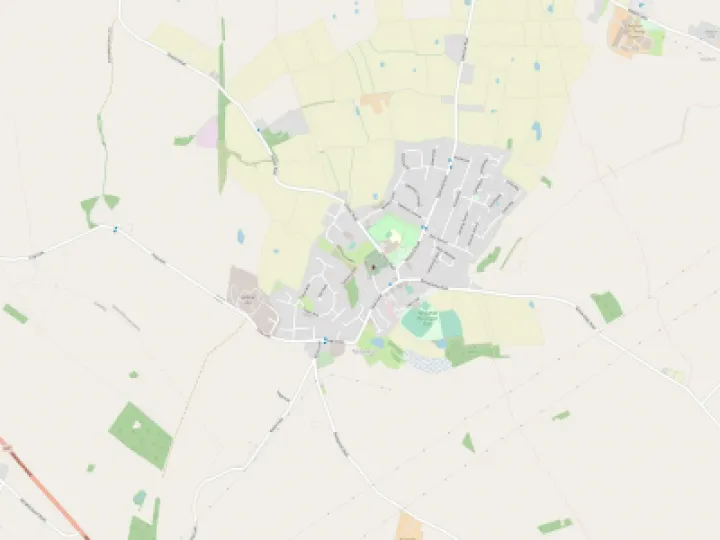Newts in Tattenhall and the signs of spring!
A reader has sent an email telling us of the excitement of her children finding a newt in her garden in Tattenhall. Over the winter, newts, and other amphibians, have all been hibernating, but now is the time for them to venture out to their breeding ponds and pools. If you're lucky, you will be able to spot them when you're out and about. When you find them them, possibly under stones, they often play dead, keeping very still.
Newts are members of the salamander family and have a lizard-like body shape. They are semi-aquatic, spending part of the year on land, returning to the water in spring to breed, spending most of the rest of the year feeding on invertebrates in woodland, hedgerows, marshes and tussocky grassland. They hibernate underground, among tree roots and in old walls. The UK's populations of the great crested newtsare internationally important.
Eggs are laid in the water where they hatch into tadpoles and then proceed to develop front and back legs, along with gills for breathing. They leave the water in late summer once their gills have been lost.
How to identify newts
There are three species of newt which are native to the UK are the Smooth Newt (Lissotriton vulgaris), the Palmate Newt (Lissotriton helveticus) and the Great Crested Newt (Triturus cristatus). This latter one is the rarest.
Smooth or Common Newt
This is the most likely newt you will see in your garden.
Look for the pale spotted throat. .
Size: Grows to around 10-11cm in length. Colour: Males brown/olive; females light brown. Belly is usually yellowy orange with black spots. The throat is pale with darker spots. Habitat: Spring to early summer in ponds and pools (frequently found in garden ponds). Late summer under logs and stones near to water. The male has a wavy back crest during the breeding season.
Palmate Newt:
You are less likely to see this one. Look for the pale throat without spots and a dark stripe through the eye – this can help you to distinguish it from the smooth newt.
Size: Grows to around 7-11cm;slightly smaller than the smooth newt.
Colour: Males olive brown; females yellowish brown. The throat is white/pale pink and does not have spots or speckling. The eye has a dark stripe running horizontally through it
Habitat: During the breeding season (early March to late May) in shallow ponds, often in heathland bogs. During summer in woodland, ditches and gardens near to water.
During the breeding season, the male palmate newt has a ridge running along its back and a tail which ends in a filament. Its back feet are also webbed.
Great Crested Newt
Much larger than the smooth or palmate newt, the male has a large crest which is broken where the tail meets the body.
Size: Up to 15cm in length
. Females may be even larger than this. This is the largest newt.
Colour: Dark brown or black with white/silver dots on sides. Underside is orange with black spots. Pale throat.
Skin Texture: Warty.
Habitat: March to May in deep ponds with vegetation. Great crested newts often range further than smooth or palmate newts during the summer and can be found in gardens, ditches and woodland. The male has a very distinctive crest during the breeding season which is broken at the point where the tail meets the body. The crest also has a silver stripe.
What do I do if I find a newt in my garden?
It is normally best to leave the newt where you found it. If the animal is trapped or in danger, release it into another part of the garden that provides cover from predators and extreme weather; for example in a compost heap, underneath a garden shed or near/underneath dense foliage.
The other amphibians you will probably see in your gardens are frogs and toads.
Frogs
Frogs are short-bodied, tailless amphibians that largely lay their eggs in water. These eggs hatch into aquatic larvae, known as tadpoles, before metamorphosing into froglets and then adults.
Keep an eye out for dark patches behind the eyes and dark barring on the back legs.
Size: Adults grow to 6-9cm in length.
Colour: Olive green to yellow-brown. Usually spotty or stripy with dark patches behind the eyes and darker barring on hind legs
. Skin Texture: Smooth and moist.
Habitat: From late February to early October in all sorts of ponds and pools. Common in gardens
Moves by hopping. Common frogspawn is gelatinous with black embryos and tadpoles are initially black but turn speckled brown. (This is a useful way of distinguishing them from toad tadpoles, which remain dark until development).
Toads
Toads are characterised by dry-looking, warty skin and short legs. They usually move via a lumbering walk, as opposed to the hopping motion used by frogs. As with frogs, most toads lay their eggs in water. These hatch into tadpoles before growing legs and metamorphosing into the adult form.
Size:Females grow up to 13cm whilst males are smaller and usually reach only 8cm.
Colour:Brown to grey-green. Paler on the underside.
Skin Texture:Dry-looking and warty.
Habitat:From late February in damp, shady spots near to breeding ponds. During the summer in woodlands, gardens and fields.
Eggs are laid in strings in a double row. Upon hatching the tadpoles are dark and, unlike frog tadpoles, remain so until they develop.
All of these creatures are good for the garden, and are an excellent sign that your garden is a healthy place. Try not to use pesticides or herbicides to kill bugs or weeds as you may be destroying their habitat.
All images from nhbs.com website.
WeLoveTattenhall
Get In Touch
Tattenhall Online is powered by our active community.
Please send us your news and views using the button below:


